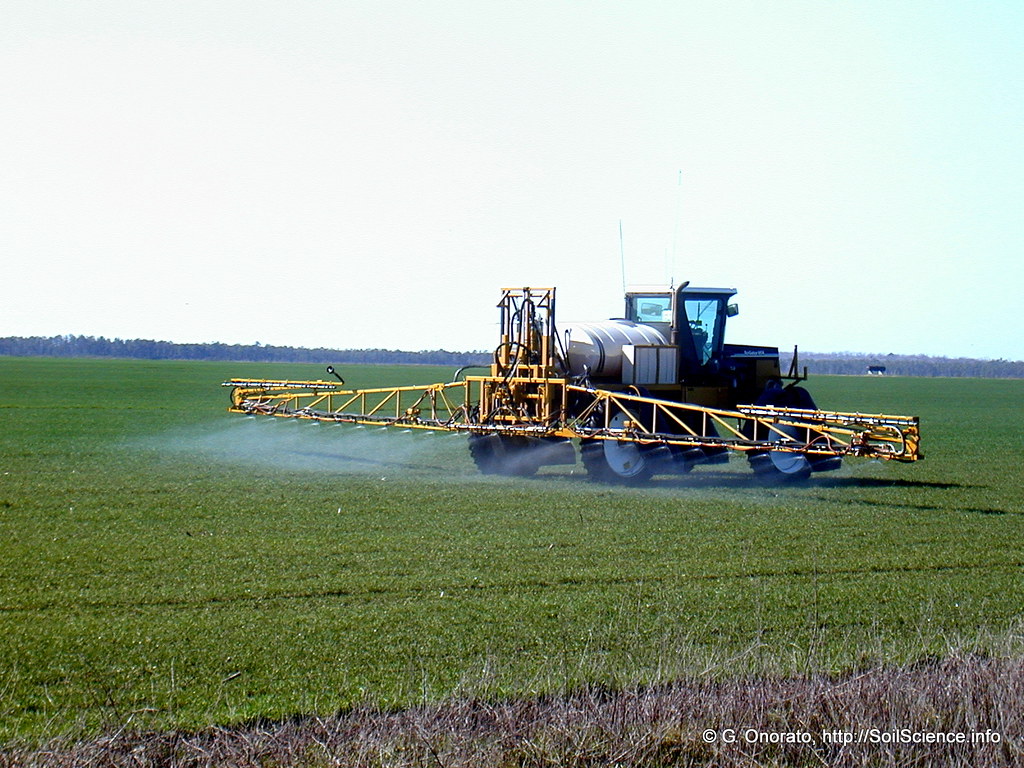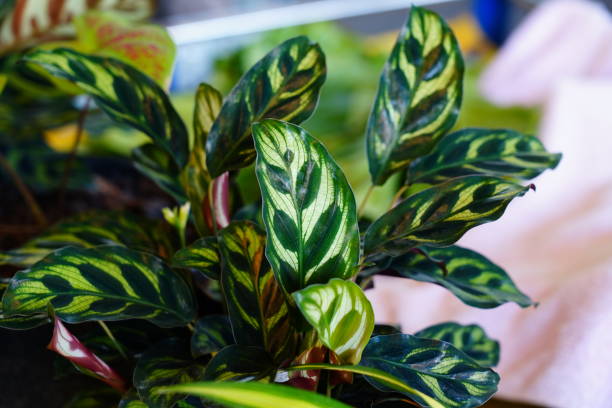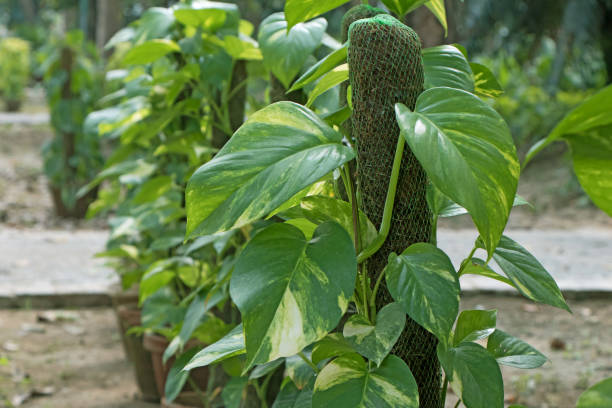Explained: Types Of Fertilizers, NPK Ratio, And More

Fertilizer – you may have heard this term many times, no matter if you are a gardening enthusiast or not. But do you know what fertilizer is? Or how many types of fertilizers are there? Or What types are environment friendly?
Well, probably you don’t know, and you are not alone in it as we often ignore this important part of our day-to-day life. Day-to-day life! Yes, it is as it is used in one form or another in our food production, whether it is fruits, grains, or vegetables. Understanding fertilizers can also be helpful if you are a gardening enthusiast.
In the article, we will explain to you the various types of fertilizers and answer other questions you might have for it. We will also tell you how to use the various fertilizers in your garden.
Types Of Fertilizers
There are various options when you want to provide nutrients to the plants. Gardeners use various fertilizers and techniques and even their combination for fulfilling the needs of plants. It all depends on the gardeners what they use, but one thing that matters is that you should know what your plant needs and then choose from various types of fertilizers.
Controlled And Slow Release Fertilizers
Do you want something for your plant that provides them with nutrients over an extended period of time? If yes, then getting the controlled and slow-release types of fertilizers can be the best option for you.
These types of fertilizers are also helpful in avoiding any problems like contributing to algae bloom or other water quality problems. Their slow release helps in avoiding mixing up with the water sources. The reason for this is that the slow release means plants absorb them according to needs. Thus there is a very small chance of any chemicals left behind to escape the landscape.
One of the major elements of slow-release fertilizers is nitrogen which is in a slow-release form. So, when you go for any fertilizers, choose those which are slow-release variants as they help plants get what they need for a long time. However, when you want types of fertilizers for vegetable gardens, then go for a combination of two.
During the plantation, mix slow and quick release types of fertilizers into the soil. This will provide your plants a ready-to-use source of micronutrients. The good thing is that slow-release fertilizers in the soil will provide them with needed nutrients during the growth period.
Inorganic Types of Fertilizers
The inorganic types of fertilizers are those which are made of elements that are synthesized or mined from non-living sources. This is the reason why numerous inorganic fertilizers have nutrients that are instantly available to the plants.
However, there are also variants that let the plants use the nutrients over time gradually. Thus when you choose an inorganic fertilizer for your landscape or garden, go for the options which allow slow release of nutrients. This will allow in avoiding the harm to the environment as well as provide plants with what they need gradually.
Organic Fertilizers
The organic types of fertilizers are those which are derived from the sources like animals and plants. One of the most common types of such fertilizers is manure.
When incorporated into the soil before the plantation, organic matter can help the fruits and vegetables, and other plants to a great extent. But for best results, you will need to add some more fertilizer after the plantation. The composted type animal manures are best when used instead of the inorganic fertilizers. It is best when applied as a side dressing. This means that place it on the sides of the rows in gardens.
For better results, you can also incorporate the organic fertilizers with the inorganic ones if you are planting vegetables. This is essential as vegetables need quick nutrients after plantation. You can also use a combination of the two types for the best results with your plants.
Tea And Emulsion
The gardeners who don’t want to use chemical fertilizers at all and want to go all organic can use the manure teas and fish emulsion.
Fish Emulsion
These fish emulsion fertilizers are high in the nitrogen, but it is low in the phosphorus contents. For the best results of the fish emulsion fertilizer, mix them with water and then sprinkle them around the plants. You must do this sprinkling at an interval of every 2 to 3 weeks or as the need of plants. These fertilizers generally have an analysis of 5-1-1.
Tea Manure
The manure tea is made by steeping the manure into a tub or barrel of water. For making it, place several shovels full of the manure into a porous cloth. Now make the sack of the cloth and soak the cloth sack of the manure into the water. You need to do this soaking until the water takes the color of the weak tea.
This process is the same as making green tea, and the only difference is that you use manure instead of green tea in it.
Dry Fertilizers
You can use the dry fertilizers in any way – you can scatter them into the full garden, make rings around individual plants, or sprinkle them down a row.
You can broadcast the dry fertilizers by taking a ratio of 1 pound for each 100 feet, or if you are scattering in the row, then also 1 pound for 100 feet in the entire plot of garden. For best results, you need to do this before the plantation. After the plantation, you need to side-dress the rows of plants with the dry plants.
You need to apply the fertilizer 2 to 3 inches away and 2 to 3 inches deep to the side of rows or seed levels for side-dressing. When applying these types of fertilizers, you should be careful not to apply them when the foliage is wet. You should also water after application to remove any particles front the foliage. For best results, the dry fertilizers go for light concentrations and small amounts and then spread evenly.
One of the common dry fertilizers is the granular fertilizers which are made into the form of pellets. Often the granular fertilizers are made by blending together a number of nutrients that are essential for the plants.
Water-Soluble Fertilizers
Water-soluble fertilizers are one of the best options if you want something for your vegetable garden. They provide a great boost to the vegetables. The crystals or liquids are mixed with the water, and when they are applied to the plants on a frequent basis, like once a week.
These types of fertilizers are especially a good option for container plants. The water-soluble fertilizers are also a good option for sprinkling the plants to give them a boost of supplements like manganese, zinc, and iron.
Urea
The urea is a nitrogen-based fertilizer that is high in nitrogen and is used in the palace of ammonium nitrate with plants. What’s even amazing about the area is that you can apply it in both forms, granular and liquid depending on you and your plant needs.
These are some of the types of fertilizers which you can use if you are a gardener thinking of growing your own vegetables. You can also use these fertilizers for various types of gardens, like a rooftop garden. It all depends on you and what types of plants you use.
Frequently Asked Questions
Like any other thing, you might have some questions about the fertilizers. To help you with these questions, here are some of the common questions and their answers:
What Is NPK Ratio?
The NPK refers to Nitrogen, Phosphorus, and Potassium. These three are the building blocks of fertilizers. The NPK ratio is displayed on the bags of fertilizers, no matter what type you pick for yourself.
It is displayed in a series of 3 numbers, like 10-5-5. These numbers are corresponding to the N-P-K ratio of the bag. In this case, the content of the fertilizer is 10% of nitrogen, 5% of phosphorus, and 5% potassium.
What Types Of Fertilizers Are Best?
The answer to this question depends on the fact that what you want in your garden. For example, the need for fertilizers is different from that of the fruit plants. In the same way, each plant needs different levels and types of fertilizers. It all depends on whether you are going for zucchini plants or a flowering plant.
Are Inorganic Fertilizers Harmful?
No, the inorganic fertilizers are not harmful if you use them within limits. However, overuse of them may lead to high yield but health risks. You also need to take some precautions with them, like wearing gloves and masks when using them, especially if you go for spraying them.
How To Make Organic Manure?
The making of organic manure is easy. If you live in rural areas, then you can use the excreta of the animals and other household waste like vegetable and fruit leftovers.
In case you live in a city, you can use the household waste and other organic matters and then put them in a container. The material will become compost over time, and your manure will be ready. For even better results, you can also use earthworms to add a boost of minerals.
How To Know The Needs Of A Plant?
Each plant has different needs, and thus, you need to know what type is best and when they need fertilizers. For knowing this, the best thing you can do is to ask your garden shop owner or nursery owner from where you buy the plants.
If it’s not what you want to do, then you can also refer to the sites like https://ehomeinterior.com/category/outdoors-and-gardening/ as they provide authentic and complete information for various plants.
Takeaway
There are various types of fertilizers available in the market which you can get for your garden and plants. However, knowing what type of fertilizer suits best is what makes the difference in the growth of the plant.
This is essential as various types of plants have various needs for fertilizer. Other than this getting an environment-friendly option is also an important thing. The good thing is that you can also make an effective natural fertilizer easily at home. All you need to know is what you need and the basic process for it, and you are all ready to have a blooming garden that is also environmentally friendly in every sense.






